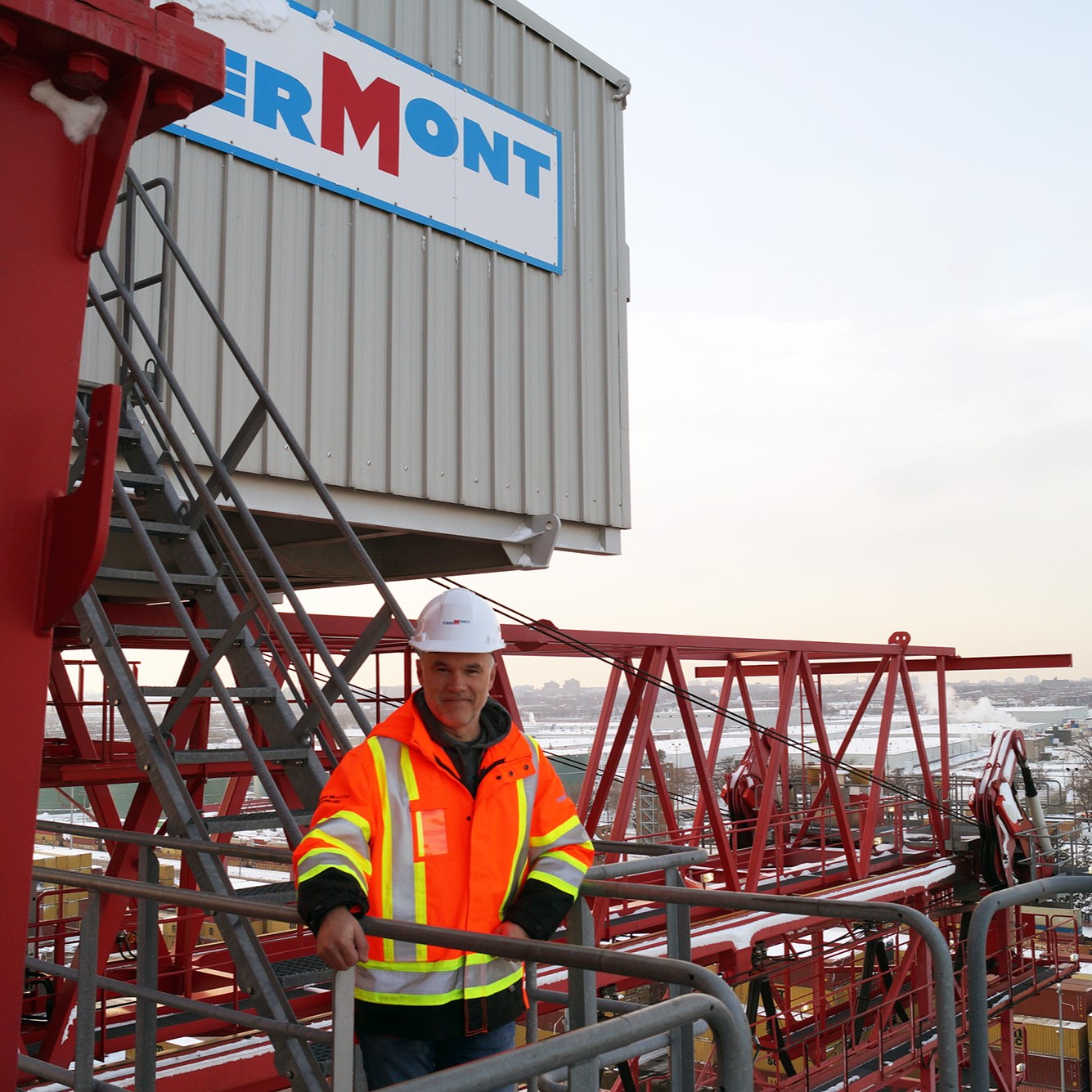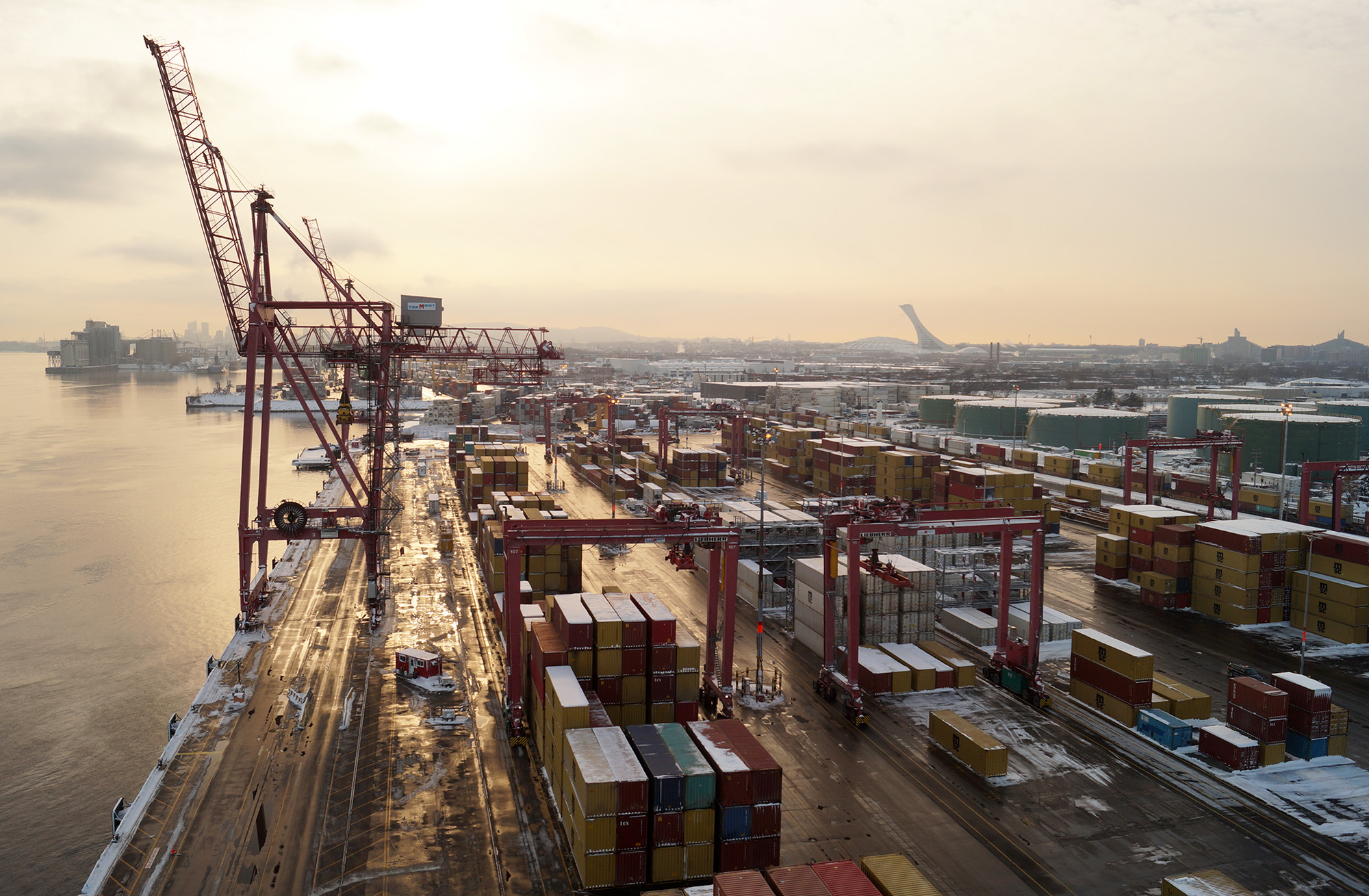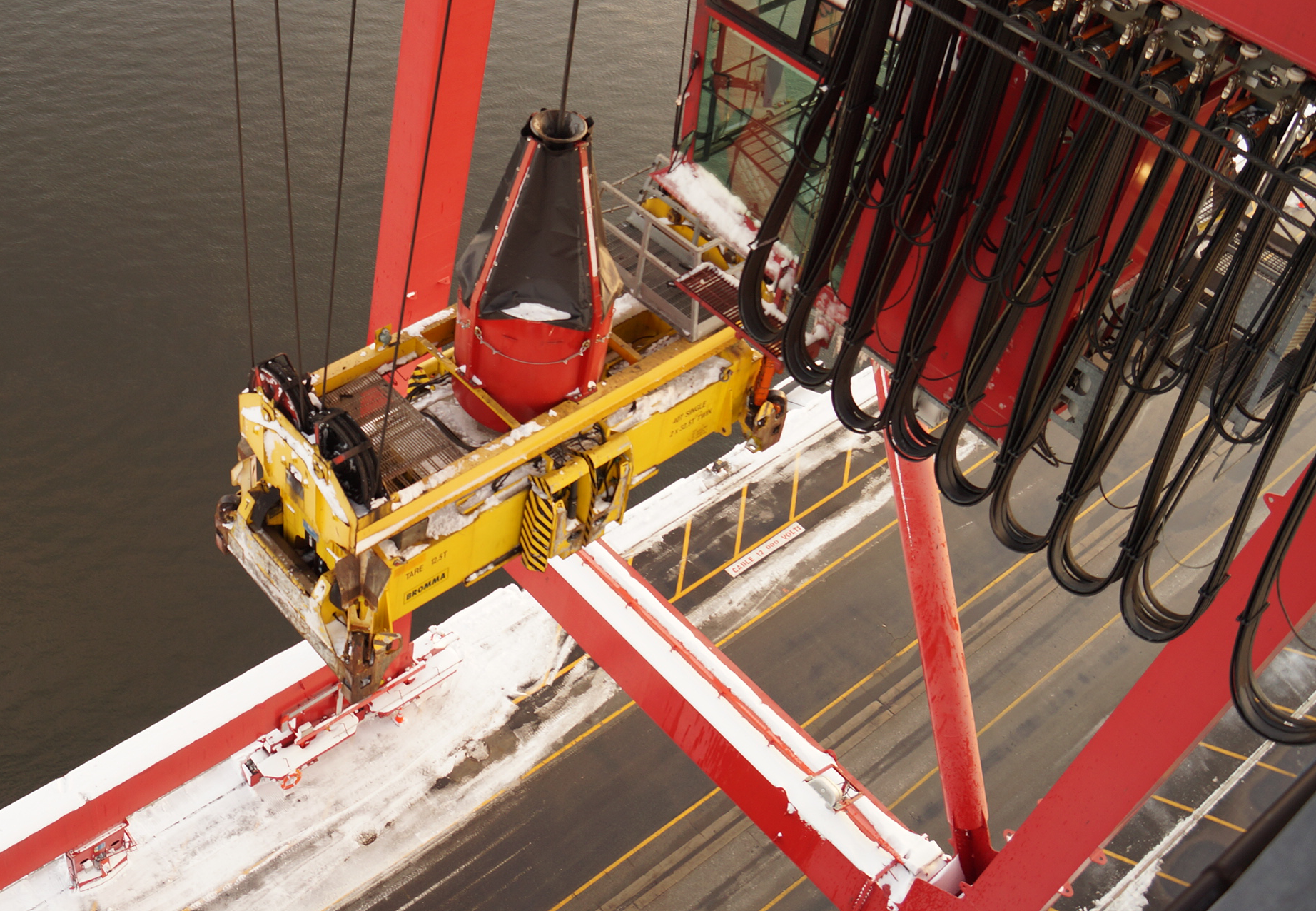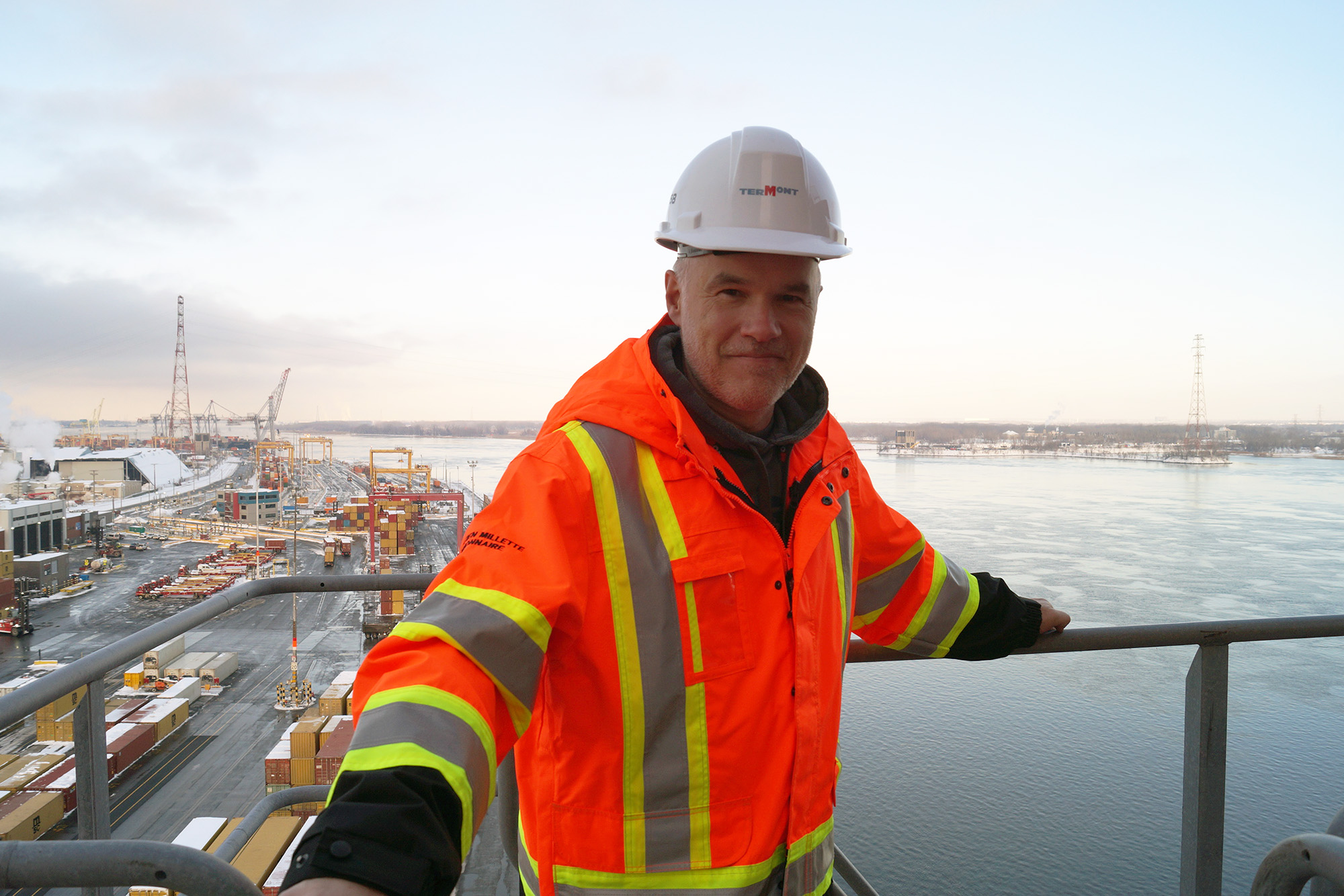
Managing port operations: the daily logistics challenge
At the Port of Montreal’s terminals, professionals like Sébastien Millette, an operations manager at Termont, work in nonstop hustle and bustle.
What is his mission? Ensure seamless coordination of every aspect of port operations, from vessels to docks, through to final distribution of goods. This role is crucial to keep the logistics machine running smoothly, ensuring the efficient delivery of goods to the four corners of the province and beyond. “Everything has to be in place to not only allow goods to be unloaded, but also to make sure that every box can reach its destination as soon as possible.”
A logistics brainteaser

Every vessel that arrives means “an average of 3,000 containers to be distributed,” said Sébastien. Depending on its weight and destination, each container will be routed to a specific location on the terminal, ready to be picked up by train or truck. “For trains, for example, we collect ‘Toronto,’ ‘Winnipeg,’ containers headed for the U.S. market or overseas, and for port trucks, we make sure that they have to navigate the terminal as little as possible. Nothing is left to chance.”
As operations manager, Sébastien is in charge of dispatching the workforce needed to welcome each vessel. About 200 people in all are mobilized within 24 hours, including planning managers, superintendents and forepersons along with signallers, stevedores and checkers assigned by the Maritime Employers Association (MEA). Each person has a specific function in the massive workings that keep operations on course.
“We can’t afford for operations to be managed haphazardly. A strategy is set and a game plan is followed to keep everything running smoothly!”
Beyond the workforce, the operations manager also has to plan for the machinery needed to load or unload vessels. “Everything is exactly calculated to match requirements, such as the number of cranes, forklifts, reach stackers, etc.” It’s all about finding the optimum balance, “not too much, not too little.”
A race against time
Once the workforce and equipment have been deployed at the terminal, the operation proceeds like a race against time, with teams working in shifts 24/7. “When a vessel arrives, that’s the priority. It has to leave as soon as possible, because it’s due in another port. We start the shifts, and keep going until the job is done.”
In such a situation, it’s not surprising that when we asked him what it takes to do this job, Sébastien answered without hesitation: “Lots of concentration! Everything happens fast. You never know what’s around the corner! You have to be on your toes. You have to be able to think about several things at once.”
Adapting and collaborating

What are the challenges along the way? They can range from equipment breakdowns to the weather, which can easily play spoilsport... “A snowstorm drastically slows down operations. We have to clear snow from every rail car, clean the rails, clear the tracks... It’s not like clearing a road!”
All this without forgetting the top priority ... safety! “We climb aboard and inspect every vessel that arrives. It has to be as safe a place to work as any other under Canada Labour Code standards.”
Yet through all the complex logistics, what Sébastien told us he likes best about his field is the human element behind the machine. “I love managing people. We work with all kinds of different profiles: everyone has their own strength, some are extroverts, some are team players, others are loners. We build relationships and get them to work together. And everyone is in cooperation and solution mode, everyone wants to make it work,” said Sébastien. “There’s a pride in working on the docks and contributing to port operations. It’s like a big giant post office!”
